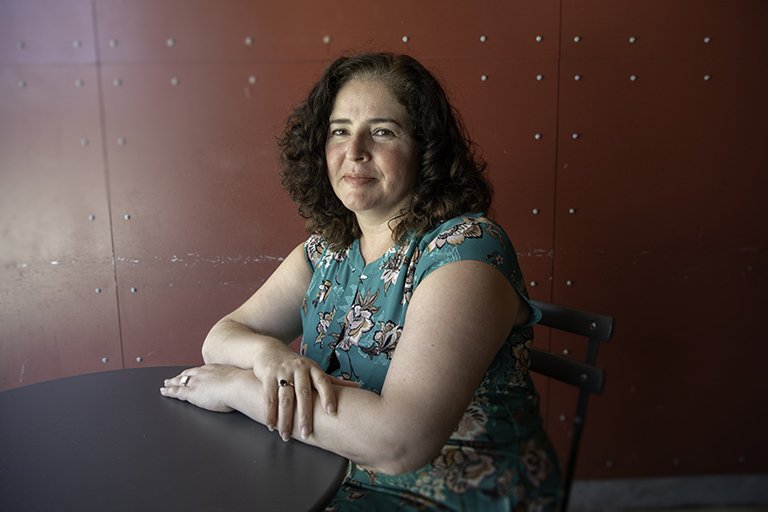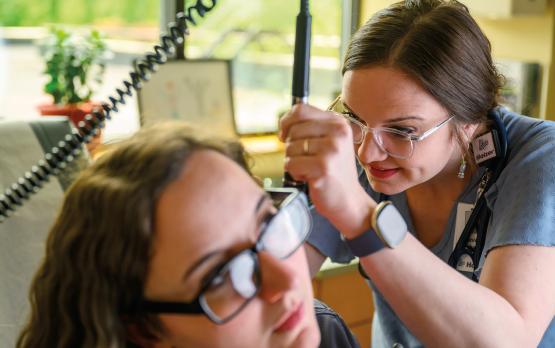
Kelley Brumfield’s brother, sister-in-law, a cousin, and an uncle—who was more like a father to her—all passed away while she was an undergraduate student at Ohio University. Perhaps most students would have withdrawn and pursued their degree later, but not Brumfield. Her dedication to learning kept her in class and doing the work, even during the hard days.
“I remember wanting to give up,” admits Brumfield, BSS ’16. “Life definitely happens. But I know my [uncle] would’ve wanted me to keep going, and I felt like I would have been letting my family down [to quit]. It was important to stay true to my goals.”
Then life threw her another curveball. Brumfield became pregnant her senior year and gave birth to her daughter, Auri, that March. Although she had to complete that final semester online, Brumfield returned to Athens to walk at spring commencement. Brumfield credits the achievement not only to her own perseverance, but also to OHIO’s Office for Multicultural Student Access and Retention (OMSAR).
“I took advantage of almost every [OMSAR] service,” shares Brumfield. “They offered valuable guidance as far as staying on track.”

Marlene De La Cruz-Guzman, PHD, CERT ’14, director of the Office for Multicultural Student Access and Retention. Photo by Ben Wirtz Siegel, BSVC ’02
A hand up
“Our primary goal is to provide student support that fosters academic excellence, leadership, and service—leading to graduation (ideally) in four years,” says OMSAR director Marlene De La Cruz-Guzman, PHD, CERT ’14.
An average of 1,400 OMSAR scholars—all of whom are underrepresented minorities or Appalachian students—take advantage of the office’s services, some of which include one-on-one support; a service-oriented study-abroad program; and classes on academic achievement, leadership, and community service.
Ensuring the success of OMSAR students—the vast majority of whom are on scholarship—requires a higher level of encouragement and empowerment. The office’s LINKS program for first-year students has the greatest impact, says De La Cruz-Guzman. Designed to aid with successful college transition, the program provides free tutoring services and peer mentoring matchups throughout the year.
OMSAR’s efforts are working. Eighty-one percent of the office’s participants continued to sophomore year in the 2016-17 academic year, and the average OMSAR student GPA was 3.075 in spring 2017.
Watching OMSAR students thrive energizes her, De La Cruz-Guzman says. “They’re driven by a sheer will to graduate despite the hardships, and often become the first person in their family to do so. It’s inspiring for the rest of us.”
Today, Brumfield enjoys a career as a health unit coordinator at the Cleveland Clinic and recently joined the U.S. Navy Reserve.
“I’m a young single mother who struggles financially, but OMSAR showed me how to take proactive steps to better my situation,” says Brumfield. “I want to set my daughter up with a good future.”

Auri checks up on mom’s heartbeat while Kelley sits still and admires her daughter’s technique. Photo by Dustin Franz, BSVC ’10.




